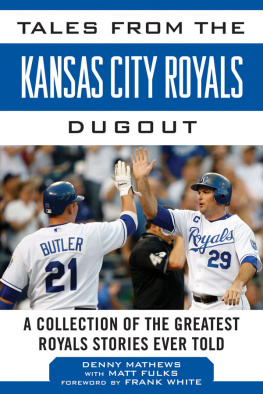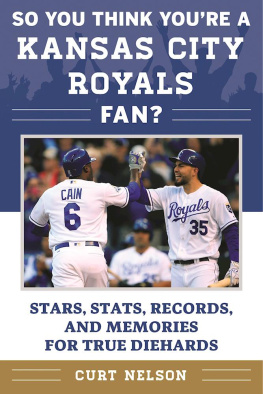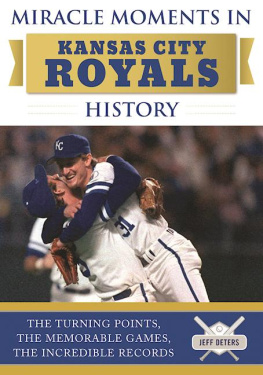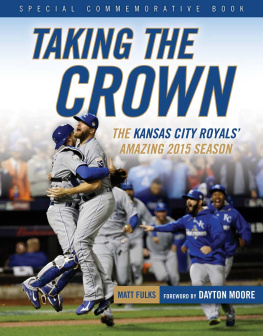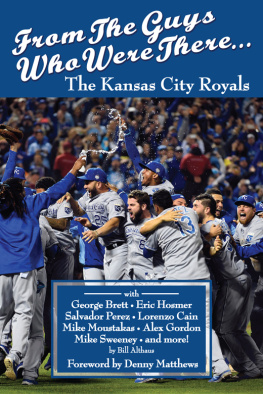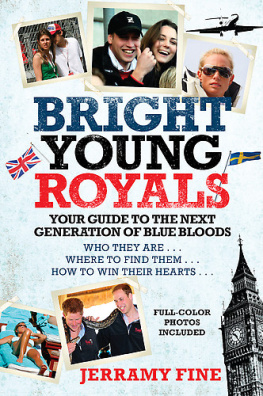Copyright 2004, 2015 by Denny Matthews and Matt Fulks
Preface 2015 by Denny Matthews and Matt Fulks
All rights reserved. No part of this book may be reproduced in any manner without the express written consent of the publisher, except in the case of brief excerpts in critical reviews or articles. All inquiries should be addressed to Sports Publishing, 307 West 36th Street, 11th Floor, New York, NY 10018.
Sports Publishing books may be purchased in bulk at special discounts for sales promotion, corporate gifts, fund-raising, or educational purposes. Special editions can also be created to specifications. For details, contact the Special Sales Department, Sports Publishing, 307 West 36th Street, 11th Floor, New York, NY 10018 or .
Sports Publishing is a registered trademark of Skyhorse Publishing, Inc., a Delaware corporation.
Visit our website at www.sportspubbooks.com.
10 9 8 7 6 5 4 3 2 1
Library of Congress Cataloging-in-Publication Data is available on file.
Cover design by Tom Lau
Cover photo credit AP
ISBN: 978-1-61321-721-4
Ebook ISBN: 978-1-61321-745-0
Printed in the United States of America
______________
This book is dedicated to all the past and present men who have worn Royal blue. In particular, we remember the great Royals who are no longer with us. You will always be remembered.
______________
CONTENTS
Chapter 1
I N THE BEGINNING
Chapter 2
T HE C HAMPIONSHIP Y EARS
Chapter 3
Y ANKEES AND A S AND C ARDS, O H M Y!
Chapter 4
L EADERSHIP AT L EVEL F IVE
Chapter 5
R OYALS H ALL OF F AME P LAYERS
Chapter 6
T HE M EN IN R OYAL B LUE
Chapter 7
P ARTNERS IN C RIME
Foreword
By Frank White, Five-Time All-Star and World Series Champion
D o you ever sit and wonder what your life would be like if it hadnt been for one major event? I sometimes do. That one event for me was being selected for the Royals Baseball Academy. The academy was an experimental brainchild of former Kansas City Royals owner Ewing Kauffman, who thought that the Royals could find good athletes and turn them into major-league caliber baseball players.
After a successful tryout in 1970, at the age of 19, I was selected by the Royals for the academy. Even though I could play baseball, I wasnt a major-league prospect. My high school, Lincoln High in Kansas City, didnt have a baseball team, so my playing was confined to summer leagues, including Kansas Citys Ban Johnson League. In fact, when I tried out for the academy, I was a sheet metal clerk at Metals Protection Plating Company. Certainly not a place to be seen by big-league scouts.
The academys director, Syd Thrift, believed in me, though. One of the teams main rules was that players were not to be married. Guess what? I was married. But Syd convinced Mr. Kauffman that I should be a part of the academy.
During our time at the Royals Baseball Academy in Florida, we werent allowed to have cars, we stayed in dormitories, we went to Manatee Junior College for classes, and then we spent hours each day working on the fundamentals of baseball. Professionally, it was one of the best things that could have happened to me.
Less than three years later, in 1973, I returned to Kansas City as a member of the Royals. It was a dream come true. I often have said that my greatest thrill as a baseball player, by far, was being called to the major leagues and playing for my hometown Royals.
Playing in two World Series, including the 1985 championship, is an unbelievable feeling. But to be able to play at a high level for so long in front of family and friends in my hometown is hard to beat. To do that for nearly 20 years is rare.
Now, to see my No. 20 at the bottom of the scoreboard, along with the numbers of my teammate George Brett and manager Dick Howser, and to think that I was the only hometown player to spend his entire career with the club, is humbling beyond words.
Even though there was a time, in 1984, when I asked to be traded, its hard to imagine playing anywhere except in my hometown and its great fans. Ironically, if it hadnt been for Mr. Kauffman, not only would I not have had a chance to play major league baseball, but major league baseball might not have been in Kansas City during the 1970s.
There was a period, after the Kansas City As left and went to Oakland, when we had a feeling in Kansas City that wed never have baseball again. At the urging of several business leaders in the area, though, Mr. Kauffman stepped up and bought the team.
When the Royals started playing in 1969, all of us were hooked. I wanted to listen to the games or watch them in person as much as I could.
Lincoln High School was situated right next to the old Municipal Stadium, the Royals first home. The school sat on a hill, which allowed us to stand on the bleachers at the football field and look down into Municipal Stadium and watch games. It was great when I had a gym class at 1:00 in the afternoon on days when the Royals would be playing an afternoon game. I was in baseball heaven.
When the Royals played at night, wed climb up to the top of the bleachers after baseball practice and watch the game until about the sixth or seventh inning. Then, late in the game, we would go down to the left field bleachers where George Toma, the teams groundskeeper, would open the gates and let us sneak in to watch the last couple innings. Again, what an experience!
It was cool to watch the Royals players leave after the game and to imagine being one of them one day. We looked at those guys as heroes. Its funny, because a few years later, I was playing with many of those same players.
When I wasnt sneaking a peek at Municipal, or making the short trip to the stadium with my dad, I was listening on the radio. I loved listening to Buddy Blattner and Denny Matthews. As the veteran announcer, Buddy put you in the ballpark; he made you think you were there. Thats what you want when youre at home listening to the game. Buddy created an atmosphere. Todays younger announcers arent like that.
Denny learned quite a bit from Buddy. Denny has been able to sustain, which is obvious by the fact that hes been with the Royals since day one. When it comes to the action on the field, Denny is about as knowledgeable as they come. He grew up playing the game, but hes also studied it. There often are times when hell sit down with a player and talk about the position, or learn the players thoughts on different situations. I know, because he and I have had a few discussions about second base play.
Through Dennys knowledge of the game, and his memory throughout the clubs history, in Tales from the Royals Dugout , he and Matt Fulks spin some fantastic stories and insight into some of the people who have shaped the history of this organization.
The book brought back some fantastic memories for me, such as the series against the As in Oakland in 1976 when we had a fight one night and then came back the next night and clinched a share of our first American League Western division championship behind a heroic game from Amos Otis and some terrific managing by Whitey Herzog.
I played for Whitey at a young age. Most of our club was young when Whitey managed us. He was a great young players manager. He was an aggressive manager who liked all-out play from all of his guys. He basically let us play. He taught us to trust ourselves as players, go out and play the game the same way regardless of the situation, and then hed take over in the seventh inning if needed.

